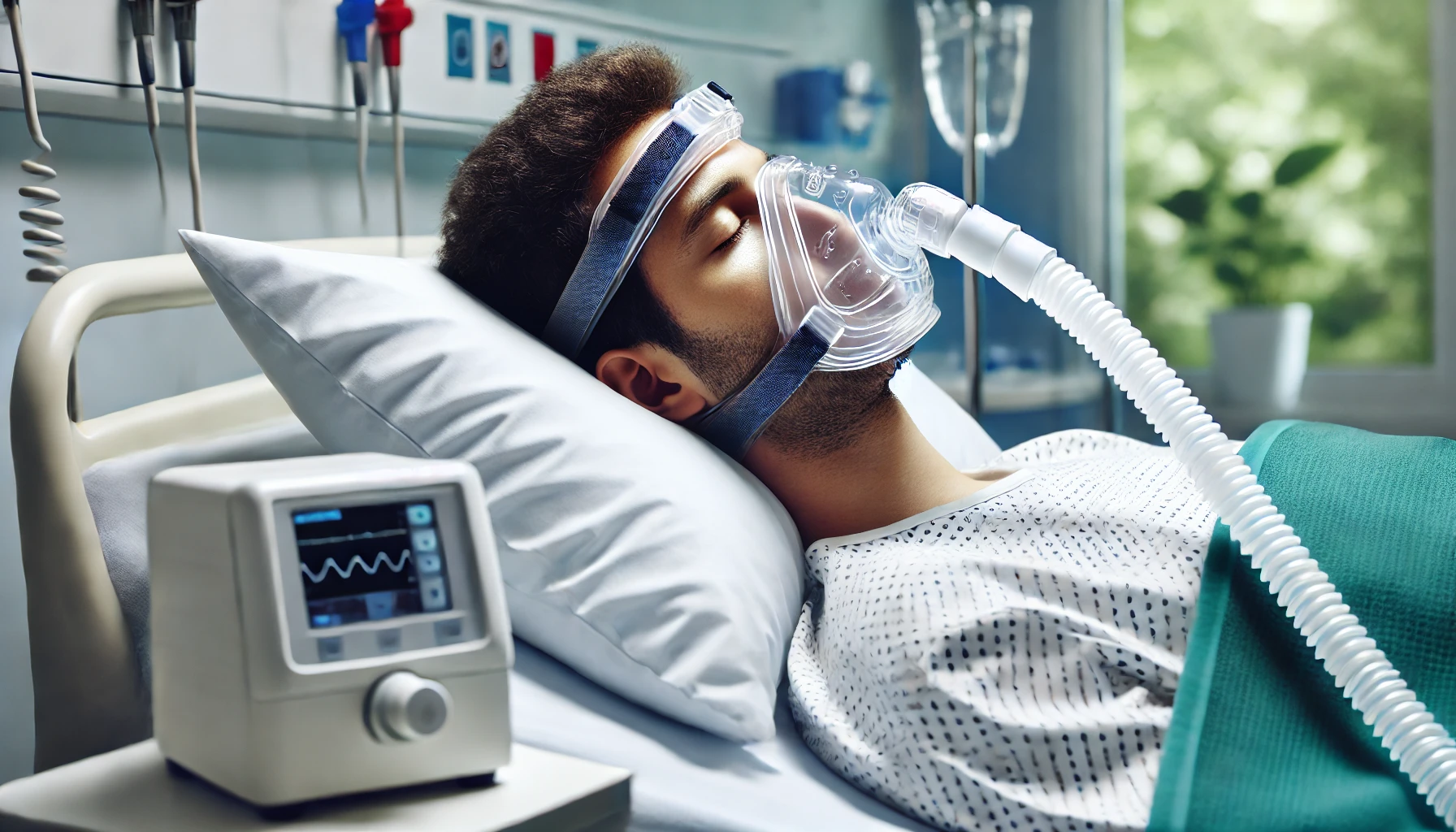This post was written with Consensus AI Academic Search Engine – please read our Disclaimer at the end of this article. BiPAP is a versatile and effective non-invasive ventilation therapy that offers significant benefits in improving pulmonary function and reducing the work of breathing in various respiratory conditions. However, its use should be carefully considered based on the patient’s specific clinical scenario, and alternative treatments may be more appropriate in certain cases.
Bi-level Positive Airway Pressure (BiPAP) is a non-invasive ventilation therapy used to assist patients with breathing difficulties. It is particularly beneficial for individuals suffering from conditions such as chronic obstructive pulmonary disease (COPD), congestive heart failure (CHF), and acute respiratory distress syndrome (ARDS). Unlike Continuous Positive Airway Pressure (CPAP), which provides a constant pressure, BiPAP delivers two levels of pressure: a higher pressure during inhalation (inspiratory positive airway pressure, IPAP) and a lower pressure during exhalation (expiratory positive airway pressure, EPAP).
Mechanism of Action
BiPAP works by providing pressure support ventilation and positive end-expiratory pressure through a nasal or facial mask. This dual pressure system helps in alveolar recruitment during inspiration and prevents alveolar collapse during expiration, thereby improving oxygenation and reducing the work of breathing1 4 6.
Clinical Applications
Postoperative Pulmonary Function
BiPAP has been shown to significantly improve postoperative pulmonary function in obese patients undergoing gastroplasty. A study demonstrated that using BiPAP with settings of 12/4 cm H2O (IPAP/EPAP) during the first 24 hours postoperatively led to better recovery of pulmonary function compared to no BiPAP or lower settings1.
Severe Pulmonary Edema
In the treatment of severe pulmonary edema, BiPAP has been compared with high-dose intravenous isosorbide-dinitrate (ISDN). The study found that high-dose ISDN was safer and more effective than BiPAP combined with conventional therapy, as BiPAP-treated patients experienced more adverse events and higher intubation rates2.
Congestive Heart Failure
The efficacy of BiPAP in severe acute congestive heart failure (CHF) has been explored, with mixed results. While some studies suggest that BiPAP does not significantly reduce intubation rates or improve cardiopulmonary parameters compared to high-flow oxygen therapy, it remains a viable option for certain patients3.
Acute Bronchospasm
BiPAP has also been used to deliver beta-adrenergic agonist aerosols in the treatment of acute bronchospasm. This method has been found to be more effective than traditional small-volume nebulizers, as it significantly improves peak expiratory flow rates and reduces the work of breathing4.
Postoperative Ventilation
In patients undergoing coronary artery bypass grafting (CABG), BiPAP has been compared with synchronized intermittent mandatory ventilation combined with pressure support ventilation (S-IMV/PSV). The study concluded that BiPAP has comparable effects on hemodynamics and pulmonary gas exchange, making it a suitable option for short-term postoperative ventilation5.
Benefits and Limitations
Benefits
- Improved Oxygenation: BiPAP enhances alveolar ventilation and oxygenation, particularly in patients with restrictive lung diseases1 6.
- Reduced Work of Breathing: By providing pressure support, BiPAP reduces the effort required for breathing, which is beneficial for patients with COPD and other respiratory conditions4 6.
- Non-Invasive: As a non-invasive method, BiPAP reduces the risks associated with invasive mechanical ventilation, such as infections and airway injuries8.
Limitations
- Adverse Events: In some cases, BiPAP has been associated with adverse events, including increased rates of myocardial infarction and the need for intubation2.
- Tolerance Issues: A significant proportion of patients may not tolerate BiPAP, particularly those with acute respiratory failure8.
- Limited Efficacy in Certain Conditions: BiPAP may not be effective in all clinical scenarios, such as in severe pulmonary edema where high-dose ISDN has shown better outcomes2.
Disclaimer
The content presented in this blog is generated by Consensus, an AI-powered academic search engine, and is based on publicly available scientific literature. While every effort is made to provide accurate, up-to-date, and well-researched information, the content is intended for informational and educational purposes only. It does not constitute medical advice, diagnosis, or treatment. Always consult a qualified healthcare professional before making any decisions regarding medical conditions, treatments, or medications. The AI system’s analysis may not cover all perspectives, emerging research, or individual cases, and it is not a substitute for professional expertise. Neither the blog publisher nor the developers of the AI-powered search engine are responsible for any actions taken based on the information provided in this content. Use of this information is at your own risk. Citations to the original scientific studies are included for reference, but these studies should be reviewed in full and interpreted with the guidance of a healthcare or research professional.
If you are experiencing a medical emergency, please seek immediate attention from a healthcare provider.
